
Twenty years ago, BT fought (and lost) a patent case which could have meant every link on the internet was subject to their patent! Why does the topic of links never die?
The information contained in the link graph is incredibly insightful if you know how to unpick it. Of course, search engines know this, but marketers, analysts and even private investigators should know how to interrogate the link graph. In this presentation, Dixon Jones will take you through the hidden secrets behind link data. He’ll show you just what sort of information you can unlock and how you can use this beyond link building.
This talk aims to be a fun and thought-provoking journey through the hidden art of Link Intelligence.
If you’d like a copy of the slides, email mailto:talk@dixonjones.com with ‘blink’ in the subject line!
Introduction
Hi everyone. Welcome to my presentation that I’m doing at Brighton SEO.
Firstly, a little bit about me and Majestic.
Majestic, for those that don’t know, is a Specialist Search Engine. So, just like the Google’s of this world Majestic crawls the Internet, and indexes all the pages it finds.
But instead of looking at the content on the pages, we track the links between websites and make a map. Then we reverse it, so instead of seeing all the links OUT of the page, what we show you is all the links INTO a webpage.
A little about me – I used to be the Marketing Director of Majestic, and now I’m a Global Brand Ambassador for Majestic. I also have another business, InLinks, and have written a book called Entity SEO, Moving Search and Strings to Things.
The History of the Hyperlink
Do you know who invented the hyperlink?
Some people say it’s Mozilla with Netscape, some people say Steve Jobs wandered into Xerox one day and saw a hyperlink on the screen, and most think it might have Tim Berners Lee, the inventor of the World Wide Web.
According to Wikipedia, it was Douglas Engelbart who came up with it in 1966 and then found that he could connect two documents together electronically in 1968.
But the person that we are interested in is Desmond J Sargent from the British Post Office in Felixstowe in 1980. And that’s because they actually filed for the patent for the hyperlink in the US Patent Office in 1977, and were awarded it in 1980. When the Post Office got sold to British Telecom (BT), it meant that BT thought that they had a patent on the hyperlink.
Between 2000 to 2002, there was a fairly significant and important court case going on in the US because British Telecom thought they owned the hyperlink and they sent out demands to all the top Internet Service Providers in the United States saying that they wanted royalties.
Why? Because all of those ISPs clients were using the hyperlink.
So they sent out bills to them, including one to a company called Prodigy, who was the largest ISP at the time. When Prodigy said no, British Telecom sued Prodigy, which led to a large court case spanning two years.
Eventually the court case failed, British Telecom lost, and it was mostly on the grounds that the hyperlink in BTs patent was stored on a central computer, whereas the hyperlinks on the Internet are distributed and there’s no central store of that information.
This goes to show just how valuable hyperlinks must be. And this was before Google became the go-to search engine of many. So there is a lot of value in a hyperlink.
This presentation will explain some of the values that are beyond the standard value of Search Engine Optimization.
Hidden Values of Links
So we just talked about court cases, and believe it or not, that right there gives a value for Bill Hartzer.
Bill is US Ambassador for Majestic, and as well as being a great SEO, but he makes money not only through link building, but by being an expert witness in court cases.
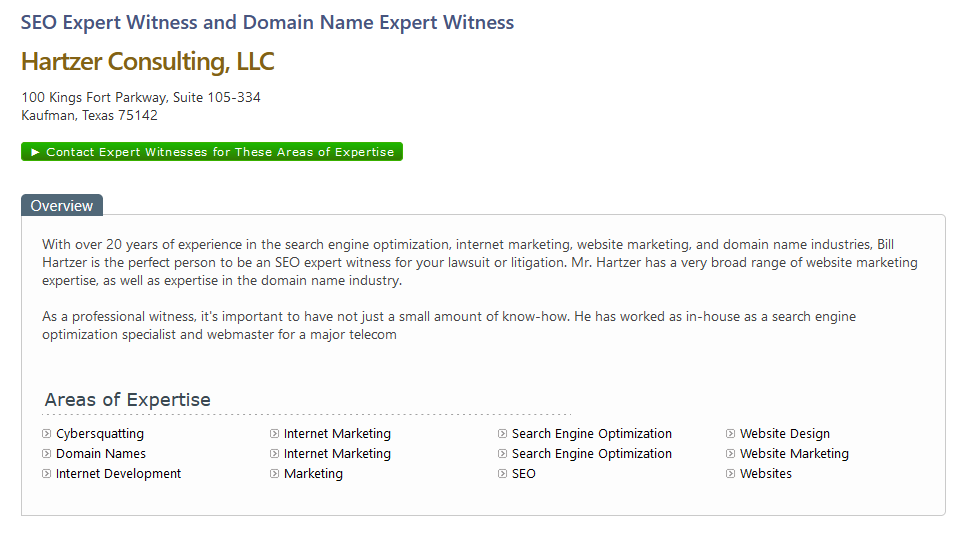
It’s easy to imagine that courts and juries can get wrapped up in knots trying to understand the Internet. So Bill goes into the courtroom as an expert witness and uses backlink data to help him demonstrate facts about Cybersquatting, Domain Names and Internet Marketing.
You can also use Link Data to say whether a business is established or whether it’s a scam.
As soon as businesses start having websites, then they start to create an imprint on the Internet, which if it was being recorded, is not gonna go away. It’s all very well for a business to say that they’ve been around for 20, 30 years, but unless they have a website, or at least a web presence, it’s very hard for a new business to pretend that they’re an old one.
Backlink History Charts can Track Growth
The Historic Index in Majestic covers the whole time they have been crawling the Internet, which is currently over 15 years, so if we can take a look at the last decade and see the for my own domain, dixonjones.com, I really had no impact on the world until around about 2012, 2013.

Then the spike drops, and it seems that I stopped talking about things on my own website around about 2015, 2016 and then it looks like I only really started re-blogging again back in 2020/1 when Covid-19 was around and when my book was coming out.
By itself, that’s already a pretty interesting history, but we can compare the Backlink History chart against my time at Majestic.

So as you can see, I stopped blogging on dixonjones.com and moved more onto Majestic and built that imprint on the world. You can see they started to develop as a business from around about 2013 onwards, although they were around before that.
And then we can also see that InLinks, which is my new business, has a presence from 2020. Now if I tried to pretend that this business had been around since 2010, it would be clear that that would be a lie.

The fact that we were doing some research on it many years before, may be one thing, but frankly, we had nothing to show for it until the end of 2019 when InLinks first had a website.
The point here is that when you can see the backlinks history over time, it really stops a lot of scammers from being able to make much headway. You can’t pretend that you’ve been around for a long time if there’s no fingerprint in the world of backlinks.
Mapping Companies Markets
You can also use backlinks to have a look at where businesses, particularly large businesses, are being proactive, by seeing which languages or which countries are linking to any particular website.
In developed countries, the majority of businesses will have an ISP in their own country, so you can use this to look at where they are doing well geographically in the world, and in which languages.
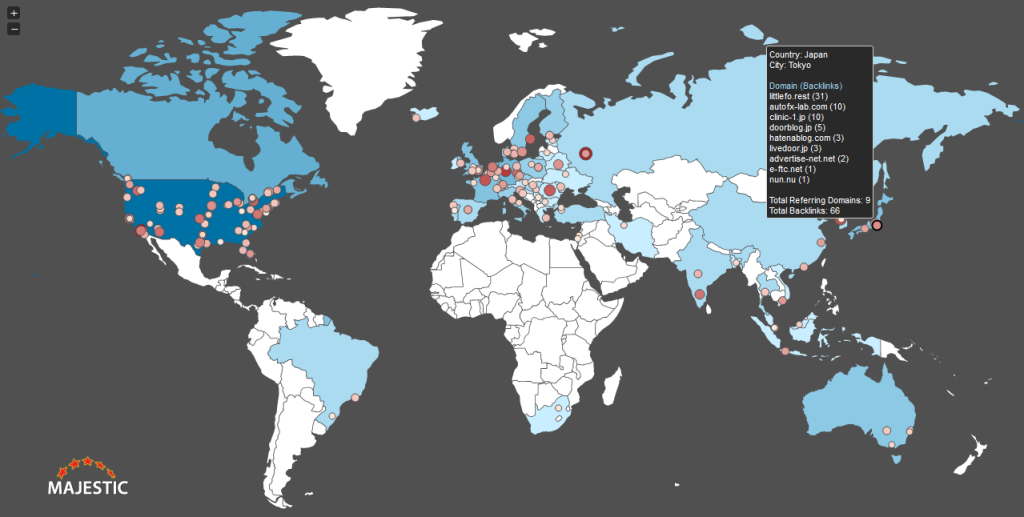
An example of this can be if Japanese language websites are starting to link through in large numbers to a particular website, that’s an indication that that business has made an indent on the Japanese market. You can make the same inference if there is a large amount of links coming from the Chinese market or the German market.
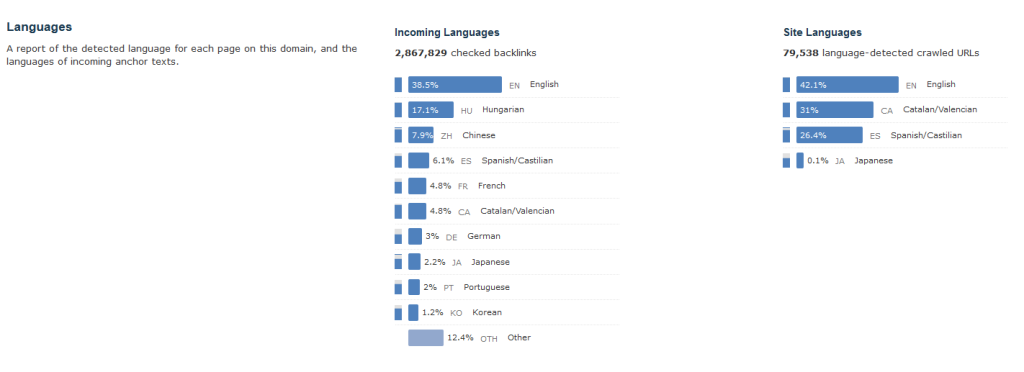
And that’s interesting because there’s a lot of businesses that have put a lot of advertising into a particular market, but they may not have got traction or have a disproportionately low amount of links in those languages.
Estimating a Websites Value
How much is a site or a business worth? Well some companies use links to help give a monetary value to a website.
Now I’m not suggesting for a minute that you should use anything apart from audited accounts to properly evaluate a business, but you can get indications of value without having to look at their accounts.

This is a Japanese website that is using an evaluation of backlinks to estimate the worth of a website. We all know that absolute numbers of backlinks doesn’t really help, maybe the number of referring domains will help a little bit, but if those domains are not valuable, then you need something that’s sort of a little bit more granular. So now backlinks are scintillated into a sort of page rank like algorithm to show the value of a web domain.
What Direction is a Company Moving in?
This is the Anchor Text for IBM.

From this we can see that IBM is not just about IBM, but it’s also about video, Ustream and something about SQL (structured query language). We can also see some anchor text in Japanese and Chinese.
There is so much information in a backlink. There’s so much context.
If you think about a backlink from the reverse, when you’re clicking on something before you click on a link on a webpage, you probably have an idea of whether that content that you’re going to go to is new or evergreen content. Whether the person that’s sending you there likes or dislikes that, whether it’s a valuable site, whether it’s a valuable piece of information, etc.
There’s all sorts of information that is intrinsically in that link. And that means that you can use links for other bits and pieces.
This means we can use backlinks to give us keyword research ideas.
If I take all the links for IBM and Oracle and Cisco and Intel and Red Hat, who I’d naturally consider competitors, I might get some very different research ideas than traditional keyword tools.
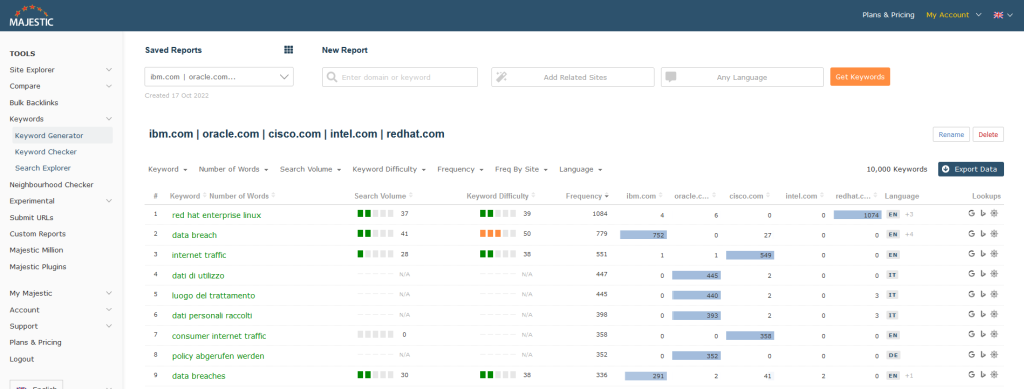
This is because I can compare those backlinks and have a look and see what kind of ideas are coming up when I put all those people together. So I can see, for example, that Cisco has got a lot of links around the concept of internet traffic and online videos, whereas IBM has a lot of information around data breaches.
So these are quite different research ideas, and we can start to see that these businesses that we might consider to be competitors, tend to be focusing on quite distinct and different areas, and they’re trying to differentiate themselves fairly effectively.
We also can look at Cisco’s keywords around online videos and then we find that IBM acquired Ustream in 2016 for $150 million. So this looks like they’ve tried to enter the video streaming market, which is interesting because it would appear that Cisco were already there in some way, shape, or form.
Using backlinks in this way helps understand the differentiation between marketing between big organizations and their marketing channels or product channels.
I’ll Take My Backlink Analysis To Go – Thanks!
The fact that there’s so much information there about a webpage from a backlinks perspective means I find it very, very helpful to have a Backlink Analysis Browser plugin that’s got information for me.
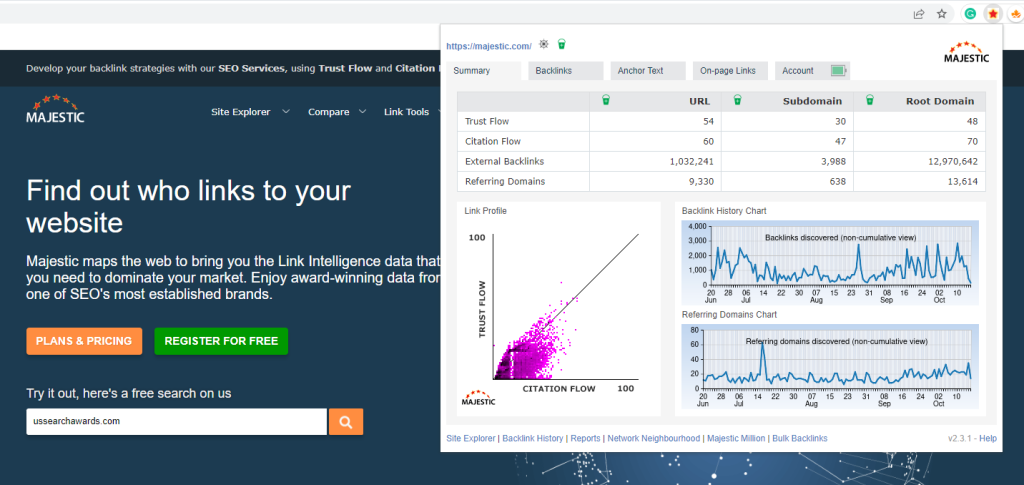
Using an extension gives you a very quick way of working out whether a website is trustworthy, whether it’s been around for a while, what context it’s in, what kind of people recommend this content, and more.
I find it’s a very useful way to give myself this sanity check on whether what I’m looking at is of value to me and society as a whole.
But you don’t just have to use this for websites.
Backlinks for Influencers
Backlinks can also be used for understanding a person’s influence or their interests or finding peers.
This is Kelvin Newman, and Kelvin runs the Brighton SEO conference.
By taking a ‘backlink first’ view of an account’s Twitter profile, you can find out how influential they are as an individual and in what context they’re influential as well.
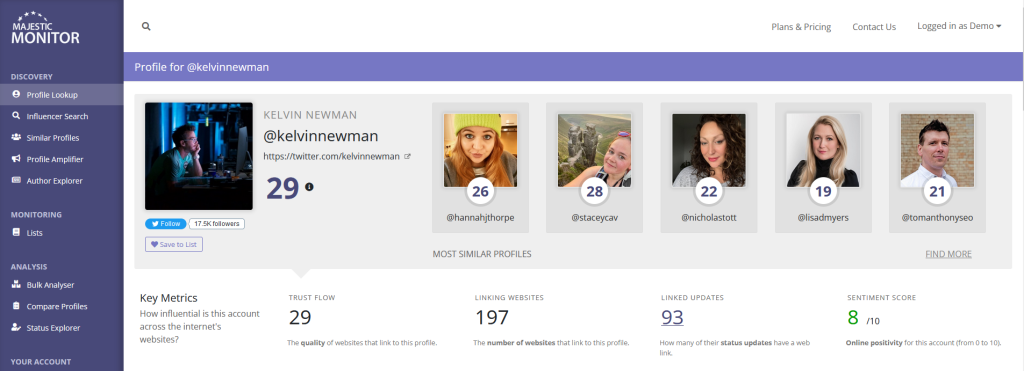
So if you know that Kelvin is interested in cycling, you may want to know who else with a Twitter account is influential on Twitter in cycling too. So you can sit there and have a look at all of the links that are coming in that are from web pages that are talking about the concept of cycling, and then you can see who these influencers are.
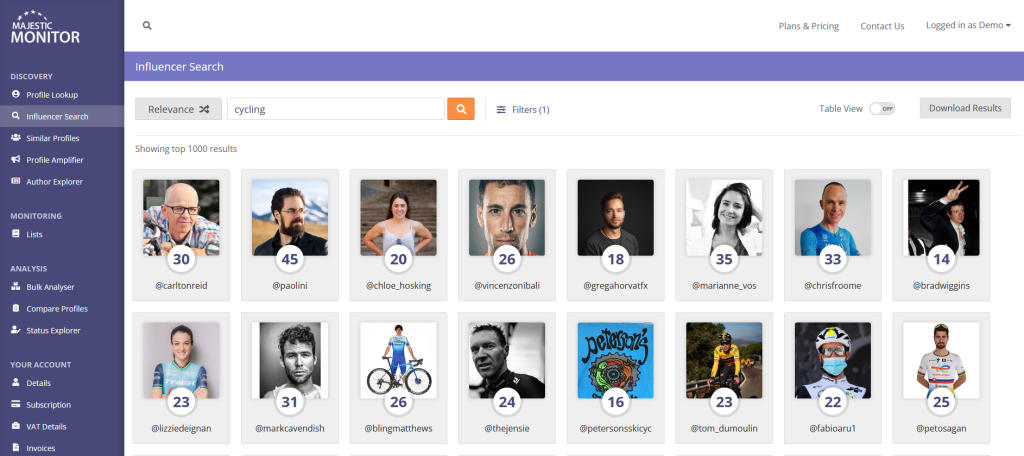
If you wanted to promote your bicycle brand for example, then these are the people that I would approach, because these are your influencers. And not just because they’re saying things on Twitter, they’re influencers because people are linking to their Twitter profiles from cycling related websites.
In Conclusion
The one takeaway I want you to have is that links will never die.
Having access to a true link data source that plays with the information in a link gives you quite a lot of power and a new set of eyes in the world.
I’d like to leave you with this quote from Booker T. Washington which I think is the way that you should be looking at links.
“Associate yourself with people of good quality for it’s better to be alone than in bad company”.
Booker T. Washington
If you’d like a copy of the slides, email mailto:talk@dixonjones.com with ‘blink’ in the subject line!
- How Important will Backlinks be in 2023? - February 20, 2023
- What is in a Link? - October 25, 2022
- An Interview with… Ash Nallawalla - August 23, 2022







